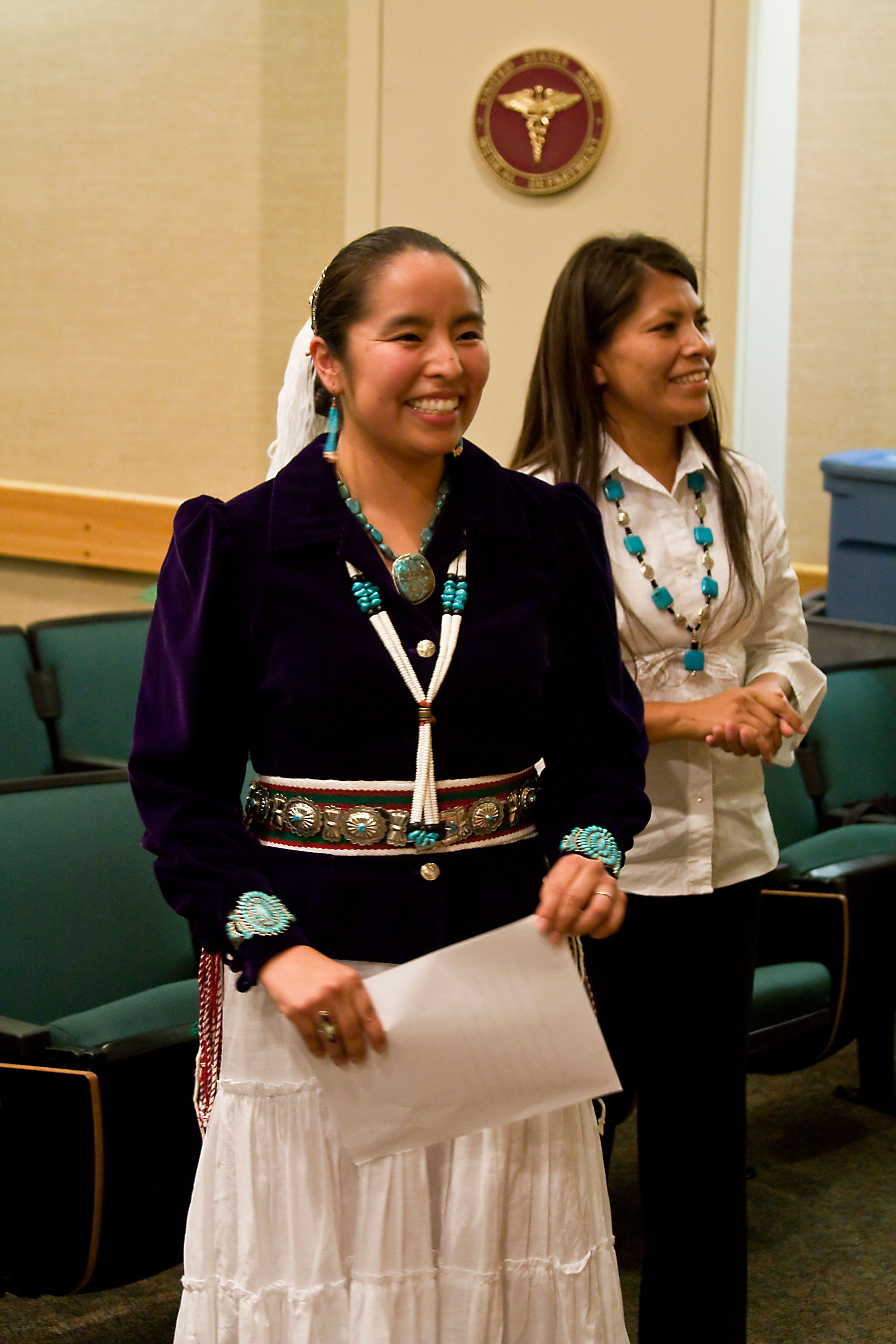ISR celebrates Native American heritage month

The U.S. Army Institute of Surgical Research hosted a presentation on the long tradition of military service by Native Americans in celebration of National American Indian Heritage Month.
Organized by the Equal Opportunity staff of the USAISR, the celebration of Native American culture and the contributions made by American Indians to the military featured a keynote address by Spc. Stacey Hanebah Enriquez, a Navajo from Pinedale, New Mexico. Enriquez was introduced to the audience in the Navajo language by Barbara Dehnert, who like Enriquez, is of the Navajo tribe and grew up on the Navajo reservation. Enriquez and Dehnert are assigned to the USAISR.
In her presentation, Enriquez highlighted the famed Indian Scouts, who served from 1866 until 1947, the Choctaw Code Talkers of World War I, who thwarted German attempts to intercept American message traffic, and the Marine Corps’ famed Navajo Code Talkers of World War II who prevented the Japanese from deciphering allied communications throughout the Pacific campaign.
Enriquez noted, "In preparing this talk, Barbara and I thought most presentations done during this month were too generalized. Most people don’t know the history, background, or struggles of the Native American People. People tend to think of old Indian stereotypes, like we live in a bubble where time stands still. That is not the case. We are a vibrant people with a wonderful culture, but we are also proud to be Americans with a long history of military service."
Continuing, Enriquez also presented information on The Women in Military Service for America Memorial Foundation which documents the experiences of past female American Indian military veterans.
Two key points made by Enriquez were that Native Americans were not permitted to vote in all the states until 1957; and War Department officials maintained that if during World War II the entire U.S population had enlisted in the same proportion as American Indians, the response would have rendered Selective Service unnecessary.
"Culture is more than the arts and literature," said Sgt. 1st Class Stephanie Truss, of the USAISR Equal Opportunity staff. "In its widest sense, culture embraces everything from your choice of what to wear each day to the traditions, beliefs and values of your family and community."
Truss went on to say, "Enriquez does not wear her cultural attire or speak in her native language everyday, instead she wears the U.S. Army uniform and lives the Army’s values on a daily basis, yet keeps her values and Navajo cultural beliefs close. This presentation points out that military service is part of Native American heritage and tradition, while part of American military history and tradition is about Native Americans."
At the conclusion of her presentation, in Navajo tradition, Enriquez and Dehnert presented a blessing in the form of gifts to the USAISR leadership. This blessing, "to walk in beauty" is used in prayers and ceremonial songs and wishes the recipient harmony and peace of mind.














